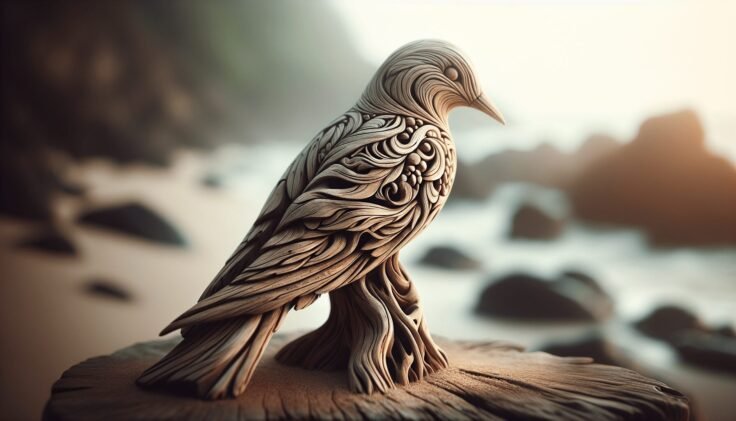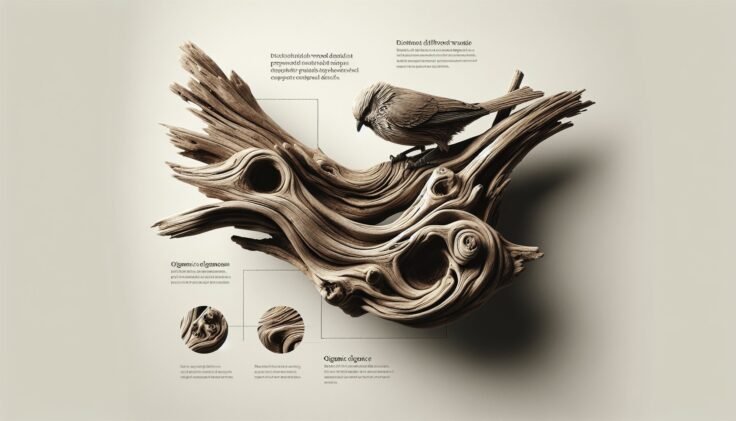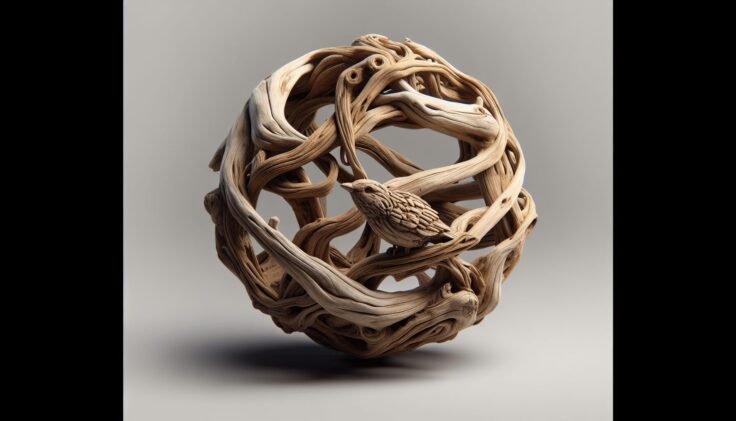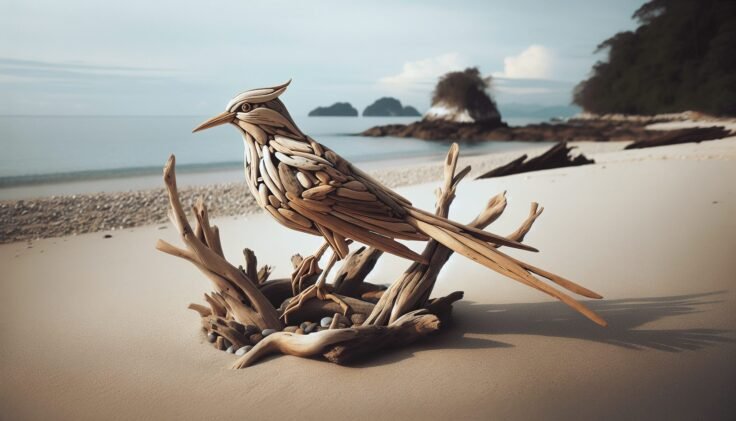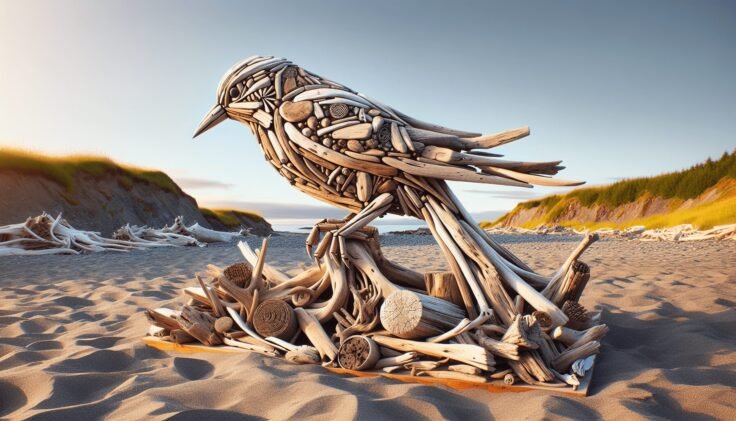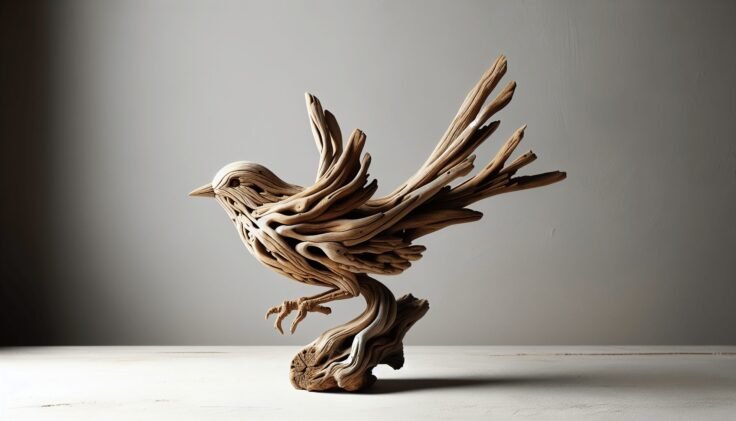Have you ever wondered how a simple piece of driftwood can transform into a stunning piece of art? Driftwood bowls are a fascinating fusion of nature’s raw beauty and human creativity. They are not just functional items, but pieces that carry with them the stories of the seas or rivers they’ve floated on. Let’s journey through the world of driftwood bowls and discover the art and craft behind them.
What is Driftwood?
Driftwood refers to the remains of trees and branches that have been washed onto the shore by the action of winds, waves, or tides. It might have traveled for miles, been shaped by its journey, and bleached by the sun before finding its temporary resting place on a beach. This wood has a unique character, often rugged and twisted, making it an ideal material for artistic endeavors.
The Appeal of Driftwood
Why is driftwood so captivating? For starters, it is a natural and sustainable material. Its aesthetic appeal is diverse—no two pieces are the same. This uniqueness is complemented by an organic texture that artisans love to work with. The weathered appearance and natural history of each piece give driftwood an intrinsic value that speaks to both nature lovers and art enthusiasts alike.
Driftwood Bowls: A Fusion of Nature and Art
Driftwood bowls represent an intersection where nature’s journey meets human artistry. Creating a bowl from driftwood involves understanding what the wood wants to express and enhancing it through craftsmanship. While the process requires skill, it also allows room for creativity and individual expression.
The Craft of Making Driftwood Bowls
Creating driftwood bowls is both an art and a craft. It is not just about the final product but also about the method and dedication behind it. Here’s an overview of the process:
Selecting the Right Piece
The first step involves selecting a suitable piece of driftwood. The choice depends on the intended shape and size of the bowl. The artist might look for a piece with interesting patterns, twists, or grain textures.
Tools and Techniques
Creating a driftwood bowl requires specific tools like chisels, gouges, sandpaper, and sometimes power tools. These tools help in hollowing out the wood, defining its shape, and giving it a smooth finish. The techniques vary depending on the desired size and complexity of the bowl.
Carving and Shaping
This process demands patience and precision. The natural contours of the driftwood dictate the initial cuts. Artisans carve out the center and gradually shape the bowl, often allowing the wood’s natural form to guide their work.
Sanding and Finishing
After carving, the bowl is carefully sanded to remove rough edges and achieve a smooth surface. Finishing touches might include treating the wood with oils or waxes to enhance its natural grain and color, while also providing a layer of protection against elements.
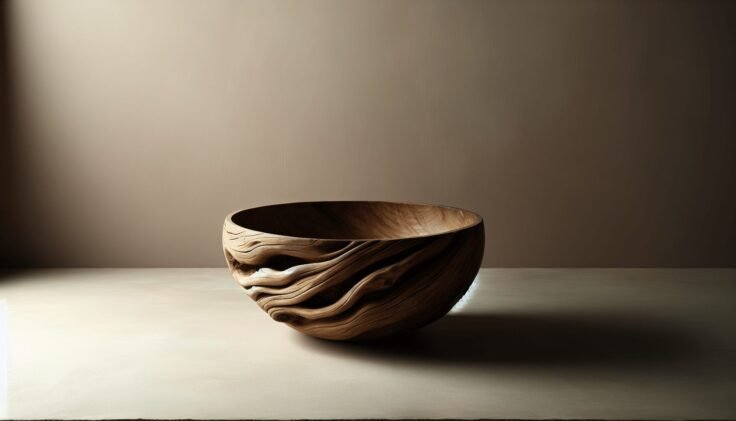
Creative Uses of Driftwood Bowls
Driftwood bowls are not only decorative but also versatile in functionality. Whether used in traditional or contemporary settings, they add a touch of natural elegance to any space.
Decorative Pieces
Place a driftwood bowl on a coffee table or shelf to serve as a centerpiece that draws attention with its natural charm. Fill it with decorative elements like stones, shells, or potpourri to enhance its appeal.
Functional Uses
Driftwood bowls can be practical too. Use smaller bowls to hold keys, jewelry, or other trinkets, while larger ones might function as fruit bowls or bread baskets. Their rustic aesthetic fits effortlessly with many styles, from coastal themes to modern minimalism.
The Environmental Impact
One compelling aspect of driftwood is its sustainability. Using driftwood repurposes fallen trees, reduces the need for cutting down new ones, and minimizes environmental waste. This makes driftwood bowls an eco-friendly choice that aligns with sustainable living ideals.
Supporting Local Artisans
Purchasing driftwood art often supports local craftsmen or small businesses, enriching communities and promoting traditional crafts. This connection between consumer and artisan not only fosters economic growth but also emphasizes the value of handcrafted art over mass-produced goods.

Driftwood Bowl Crafting: A Meditative Process
Creating art from driftwood is more than a hobby; it’s a serene and meditative practice. Crafting driftwood bowls allows you to disconnect from the digital world and connect with nature.
The Therapeutic Benefits
Engaging in driftwood crafting can reduce stress and promote mindfulness. As you focus on carving and shaping, you enter a state of flow, where time seems to slip away, and your mind becomes clear.
An Artistic Community
There is a thriving community of driftwood artists and enthusiasts who share knowledge, techniques, and inspiration. Joining this community can be a wonderful way to learn, grow, and find motivation for your own projects.
Challenges in Crafting Driftwood Bowls
While creating driftwood bowls is rewarding, it does come with its challenges. Let’s look at some hurdles one might face in this craft.
Material Inconsistency
Driftwood is highly inconsistent, presenting each artisan with unique challenges. Its irregular shapes and textures require adaptation and flexibility in crafting techniques.
Environmental Sensitivity
The ocean or river environments can sometimes leave driftwood with traces of salt or other residues. Cleaning and preparing the wood is crucial before use. Additionally, ensuring it is adequately dried will prevent future warping or cracking.
The Evolution of Driftwood Art
Driftwood has been used in art for centuries. Its evolution showcases a journey from functional items toward expressive, sculptural forms.
Historical Perspective
In the past, indigenous peoples used driftwood to create tools and shelters. Its use in art has grown, reflecting changes in artistic expression and environmental awareness.
Contemporary Driftwood Art
Today, driftwood art has gained popularity, partly due to the rising interest in sustainability and natural aesthetics. Modern artists are experimenting with driftwood in new ways, creating intricate sculptures and innovative designs.
Finding and Preparing Driftwood for Crafting
If you’re interested in creating your driftwood bowls, knowing where and how to collect driftwood is vital. Follow these guidelines for a successful and sustainable collection.
Ethical Collecting Practices
Always respect local laws and regulations concerning driftwood collection. Avoid disturbing natural habitats and consider taking only what you need to ensure abundant resource availability for other collectors and wildlife.
Cleaning and Drying Driftwood
Once you’ve found your perfect piece, clean it thoroughly to remove any debris and salt. Rinse the wood and allow it to dry completely—this might take several weeks depending on the climate. Proper drying is mandatory to prevent mold and ensure durability.
Driftwood Bowls as Gifts
Driftwood bowls make extraordinary gifts that are both practical and meaningful. Their natural beauty and handmade charm make them ideal for housewarming, weddings, or birthdays.
Customization Options
Personalize your gift by carving initials or a special design into the bowl. Adding a personal touch can make the gift even more memorable and appreciated.
Package with Care
When gifting a driftwood bowl, consider pairing it with complementary items such as artisanal soaps, candles, or gourmet foods to create a thoughtful and cohesive package.
Taking Care of Your Driftwood Bowl
Maintaining your driftwood bowl will ensure it retains its beauty and functionality for years to come. Here are some tips on care.
Regular Cleaning
Clean your bowl regularly using a damp cloth. Avoid soaking it in water to prevent damage. For stubborn spots, a mild mixture of vinegar and water can work wonders without harming the wood.
Oiling for Longevity
Occasional oiling can enhance the wood’s natural grain and protect it from drying out. Use natural oils like linseed or mineral oil for the best results.
Conclusion: Embracing Nature’s Imperfect Beauty
Driftwood bowls are more than just beautiful objects; they are vessels of stories and craftsmanship that highlight the intrinsic beauty of nature. They teach us to appreciate imperfections and find elegance in simplicity. Whether you choose to purchase one from a local artisan or embark on creating your own, driftwood bowls offer an opportunity to bring a piece of nature into your home, a constant reminder of the beauty that exists in the world around us.







